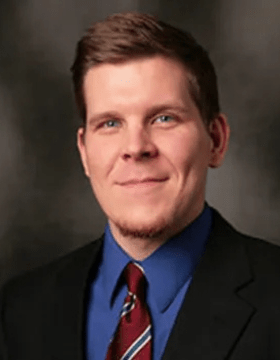- Share
A Trip to the State Capital with the Ohio Workforce Coalition
Senior Policy Analyst Kyle Fee learns more about the state’s workforce development efforts.
The views expressed in this report are those of the author(s) and are not necessarily those of the Federal Reserve Bank of Cleveland, other Reserve Banks, or the Board of Governors of the Federal Reserve System.
Late last year, I was fortunate enough to join the ranks of the Ohio Workforce Coalition (OWC), which “promotes public policies that build the skills of adult workers, meet employer skill needs, and strengthen the workforce system to ensure opportunity and prosperity for Ohio families.”1 The OWC goals align with two of the Federal Reserve Bank of Cleveland’s strategic pillars—promote economic growth and development and be a voice for the Fourth District—making our connection to the OWC all the more relevant.
This strategic overlap has already allowed me access to many new practitioner anecdotes and policy insights, along with an expanded network for our Community Development team, as the “OWC brings together leaders from education and training institutions, economic and workforce development organizations, business and industry, labor unions, and human service providers to promote public policies that build the skills of Ohio’s adult workers.”2 Our ability to tap into this professional network should serve the Community Development team and the Federal Reserve Bank of Cleveland well, as we collect information and monitor economic conditions throughout the Fourth District. In return, we hope the OWC will benefit from the technical expertise we can bring to the table.
The OWC relies on two main tools to build a better workforce system: information dissemination and advocacy. OWC members gather and share knowledge to better inform and update the group’s policy platform. What better place to gather and share information on state workforce development issues than the state capital?
I recently attended Ohio Governor John Kasich’s Executive Workforce Board (EWB) meeting in Columbus, Ohio. Governor Kasich established the EWB “to guide the Office of Workforce Transformation in its work and ensure that business needs are at the forefront of improvements made to the workforce system.”3 The EWB meets quarterly to provide updates on program progress and developments. Aside from being quite informative, this meeting was notable because Governor Kasich was present and freely shared his views. He spoke openly about he feels Ohio’s workforce development system is in the top tier of the country, but still has room for improvement.
For my part, the meeting was highly informative. Updates and information were given on several workforce related programs during the EWB meeting. For example, the Office of Human Services Innovation, created to combine social service and workforce development programs into a single case-management system, shared that this new system is scheduled for rollout in December 2015 for 16- to 24-year-olds, with a full rollout in the summer of 2016.
In other updates, the Federal Workforce Innovation and Opportunity Act requires Governor Kasich to designate workforce development areas throughout the state. In Ohio, this is essentially a reorganization process that is currently seeking input from local officials. Additional information on the designation of workforce development areas in Ohio is expected to be released this summer.


